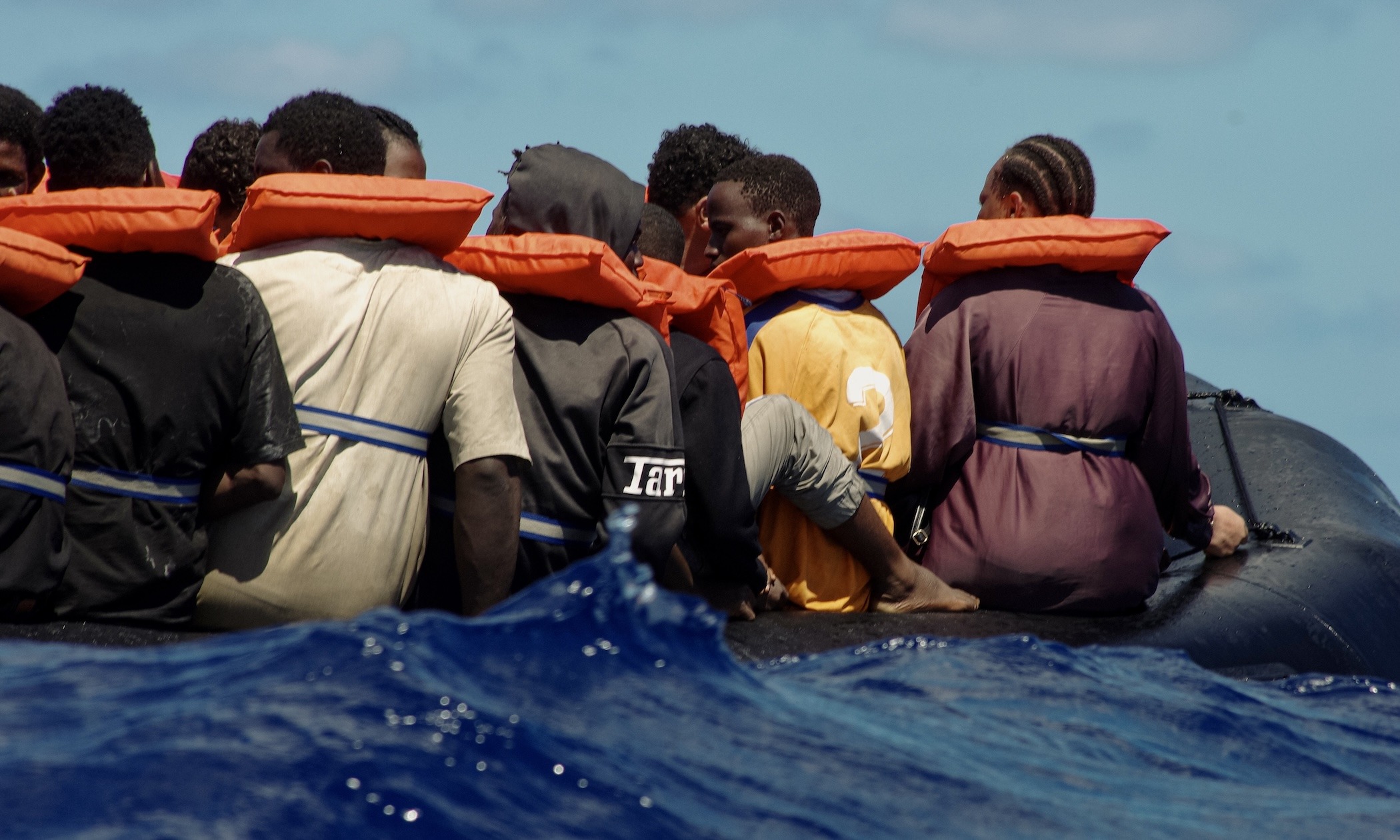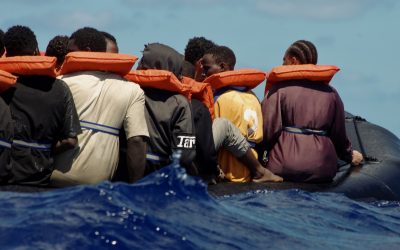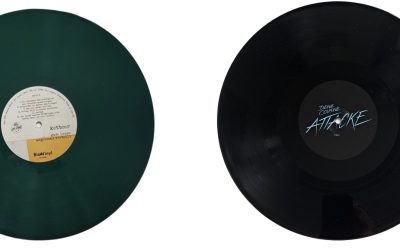Operational report 6 – 2025 (19.7.-9.8.2025) written by Paula Gaess, crew member on operation 6/2025
The sixth crew of NADIR began their operation under unusual circumstances. The ship was only allowed to set sail after the politically motivated detention had ended. At sea, the crew twice encountered people in acute distress, once having to evacuate individuals directly out of the water. These encounters revealed both the immense resilience of the survivors and the harsh dangers they had endured. Yet alongside the relief of those rescued, grief remains for the four who are still missing.
This sixth operation of the NADIR once again began differently than planned. Two weeks earlier, the Italian government had detained the sailing vessel under arbitrary accusations. For the second time within a single month, the NADIR was barred from leaving the port of Lampedusa for 20 days. The detention kept us from departing for another week. While we carried out intensive onboard training in preparation for the operation, numerous emergencies unfolded at sea. Distress calls came in over the radio, and every day people on the move were reaching the small Italian island.
At the same time, further bad news reached us – the sailing vessel DAKINI as well as AURORA of SEA-WATCH, which had supported 70 people in a joint operation, were also detained by Italian authorities. Three civil rescue vessels lay stuck in Lampedusa’s harbour, listening to distress calls at sea, unable to intervene and left only to wave at those arriving.
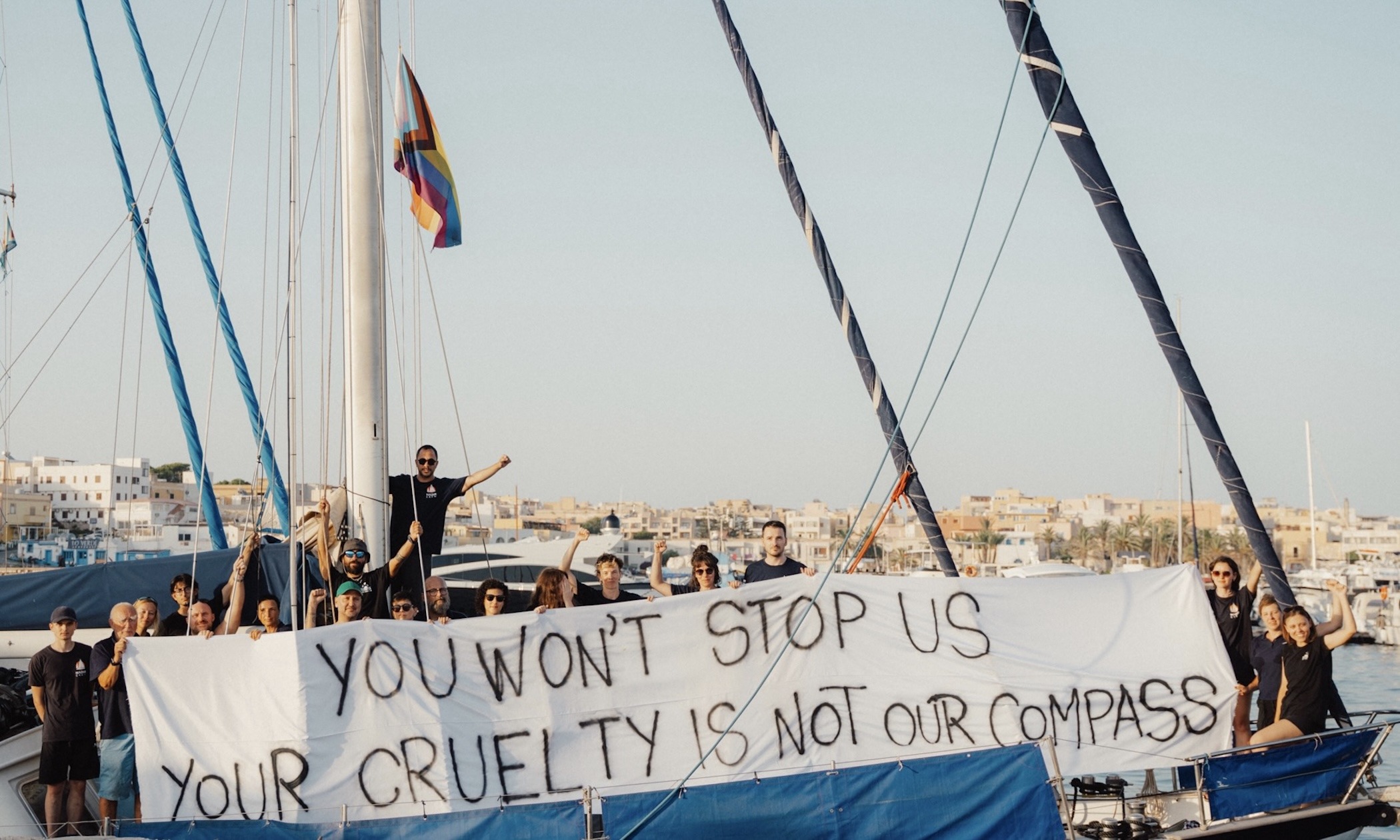
Our detention ended on the night of 26 July. Shortly after midnight, however, the Mediterranean wind Mistral turned toward the Libyan coast and whipped up the sea so violently that we were forced to remain sheltered in Lampedusa’s harbour for another four days. When we finally set sail on Wednesday, 30 July, the sea had still not fully calmed. The rest of our operation was marked by heavy swell and strong winds.
Merchant vessel rescues 97 people – Europe looks away
As there were no further distress cases to respond to, we set course for the area in the central Mediterranean where a critical situation was unfolding. The merchant vessel PORT FUKUOKA had rescued 97 people from acute distress the day before. During the rescue, the boat capsized, two children lost their lives and another person went missing. While the crew of the PORT FUKUOKA did everything they could to care for the survivors, we witnessed how state actors in the Mediterranean once again turned their backs on their responsibility. When we arrived on Thursday morning, the merchant vessel had already been waiting more than 48 hours for coordination from the rescue coordination centres. Yet neither the Maltese Rescue Coordination Centre (RCC) nor the Italian MRCC took charge of the case. Around 6 a.m., a military vessel of the so-called Libyan Coast Guard appeared and aggressively ordered the PORT FUKUOKA to leave the so-called Libyan search and rescue region.
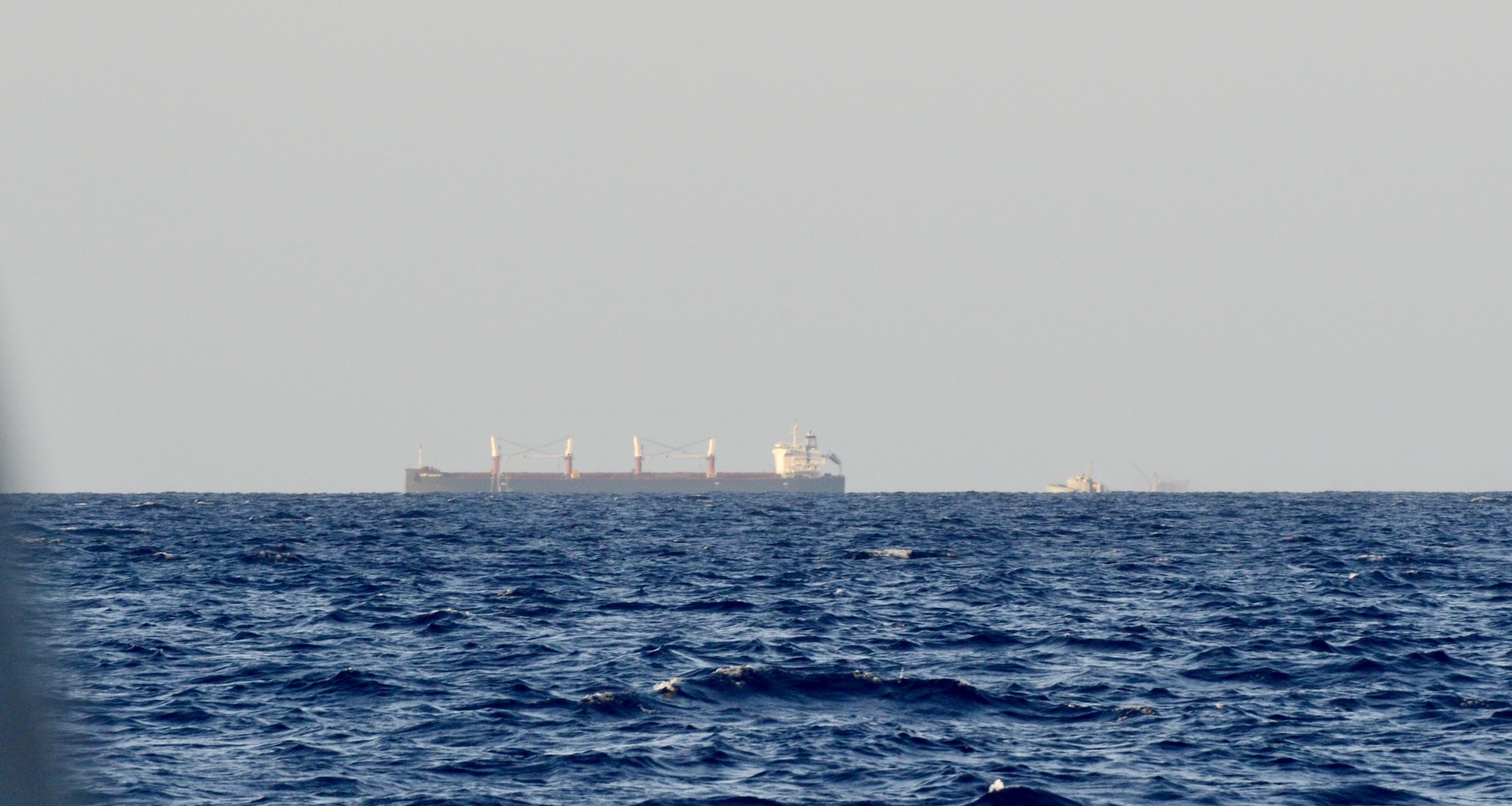
Together with the TROTAMARIII of the COMPASS COLLECTIVE, which had been standing by the merchant vessel for days, we too were ordered to leave immediately and set course northward. It was only after a heavily pregnant woman’s waters broke on board that the Italian authorities approved the medical evacuation of the two pregnant women on Thursday evening. The remaining 95 survivors were finally allowed to disembark the following day in Pozzallo, Sicily.
Six days on an iron boat, at the mercy of the storm
We left the merchant vessel on Thursday afternoon, knowing that the TROTAMARIII and the OCEAN VIKING of SOS MEDITERRANÉE would remain by its side. Shortly afterwards, the Seabird 2 reconnaissance aircraft alerted us to another distress case nearby. An hour later, we found the iron boat, which was being tossed around dangerously by the still high waves. There were 36 people on board, including two pregnant women, two babies and a five-year-old child. As usual, we distributed life jackets and drinking water, and we learned that they had already been at sea for six days. They had set off from Tunisia the day before the storm started – a crucial reason for us to evacuate them to the NADIR without delay.
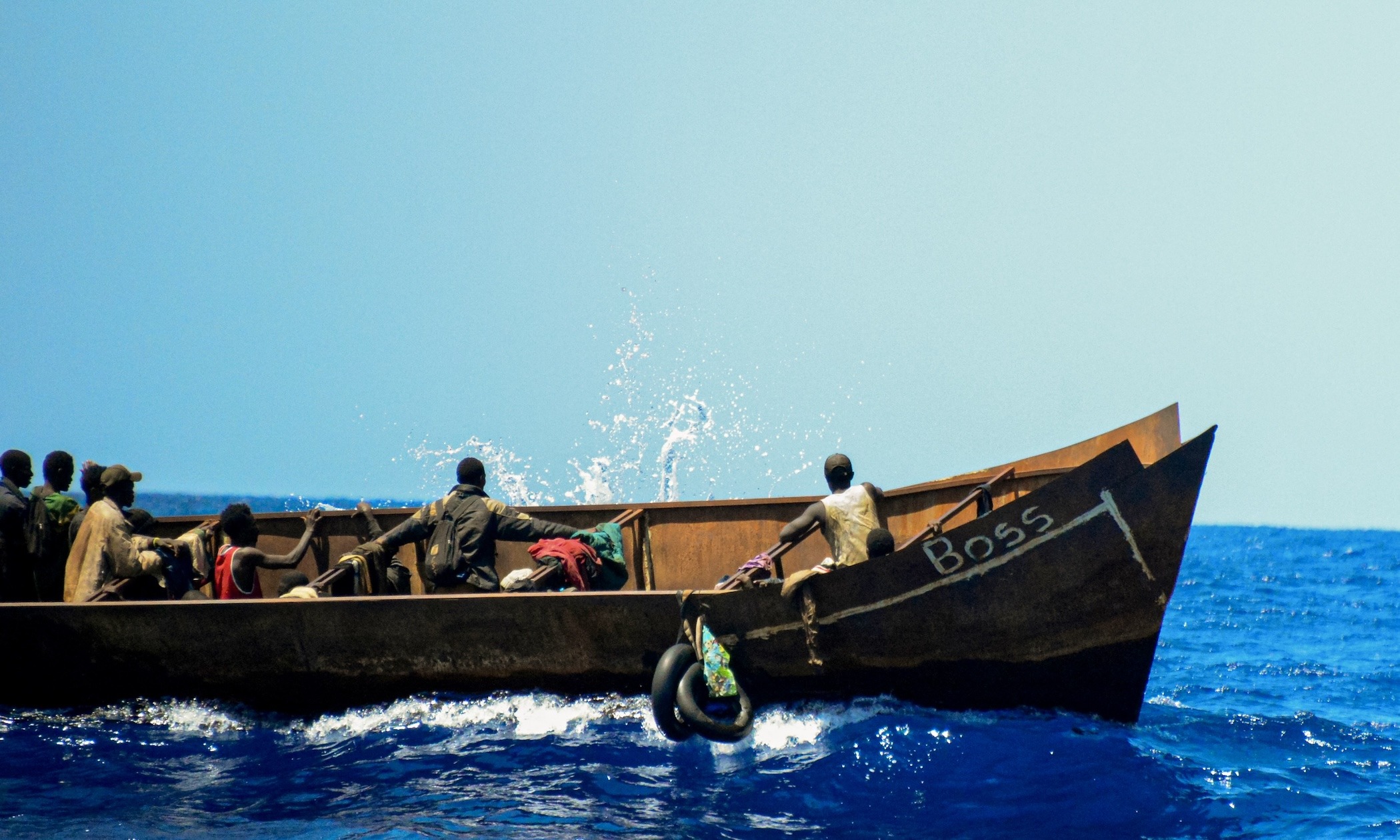
During the evacuation, we immediately noticed how exhausted the people were. Most suffered from dehydration, and nearly all had chemical burns from the mixture of seawater and petrol in which they had been sitting for six days. Even the babies had burns across their bodies. Our medical team was working at full capacity.
After the rescue, the survivors asked us to search the sea for missing people. They told us that earlier that morning, 16 people had gone overboard in an attempt to pull the boat northward, but were swept away and separated from it. With the engine broken down for days, the storm had pushed them about 40 nautical miles south towards Libya. We passed their accounts on to the rescue coordination centres, as well as Seabird 2 and the TROTAMARIII.
A reunion at sea – between joy and sorrow
Barely half an hour after we had learned about the 16 missing, sudden commotion broke out on board the NADIR. Survivors at the bow began shouting: “People in the water!” The NADIR steered directly toward several people drifting in the waves, the missing from the same boat. The crew threw them life-saving equipment and launched our tender to pull them out of the sea. They had been scattered over a wide area, so we first picked up those furthest from the ship. Some managed to reach the NADIR on their own and were taken directly on board. In total, we were able to rescue twelve people from the water. According to the survivors, one person had already drowned, and three more remain missing to this day. The scenes of joy and grief that followed on board the NADIR left a deep impression on us. None of the survivors had believed they would ever see their companions again.
Part of our sixth operation was accompanied by independent journalist Adrian Kriesch. His reports on the operation have so far been published by ProSieben/Sat1, WDR, and Deutsche Welle.
The search for missing persons
For more than an hour, we searched together with the TROTAMAR III for the missing people, but without success. At the same time, we were particularly worried about the two pregnant women. One had not felt her baby move for a day, while the other was suffering from severe pain. We requested a medical evacuation from the Italian authorities. While waiting for a response and continuing northward through the waves, the entire crew cared for the survivors. We cooked warm meals, offered them the chance to shower, and especially tended to those most severely affected by burns. Shortly after midnight, a vessel of the Italian Coast Guard finally reached us and took ten people on board, including the pregnant women, the babies, the small child, and other medical emergencies. They were brought to Lampedusa as quickly as possible.
The NADIR reached the island only the following morning. Shaken by the waves of the previous night, the people were finally able to set foot on Italian soil after seven days at sea. With deep respect for what these 48 people had endured, we bid them farewell.
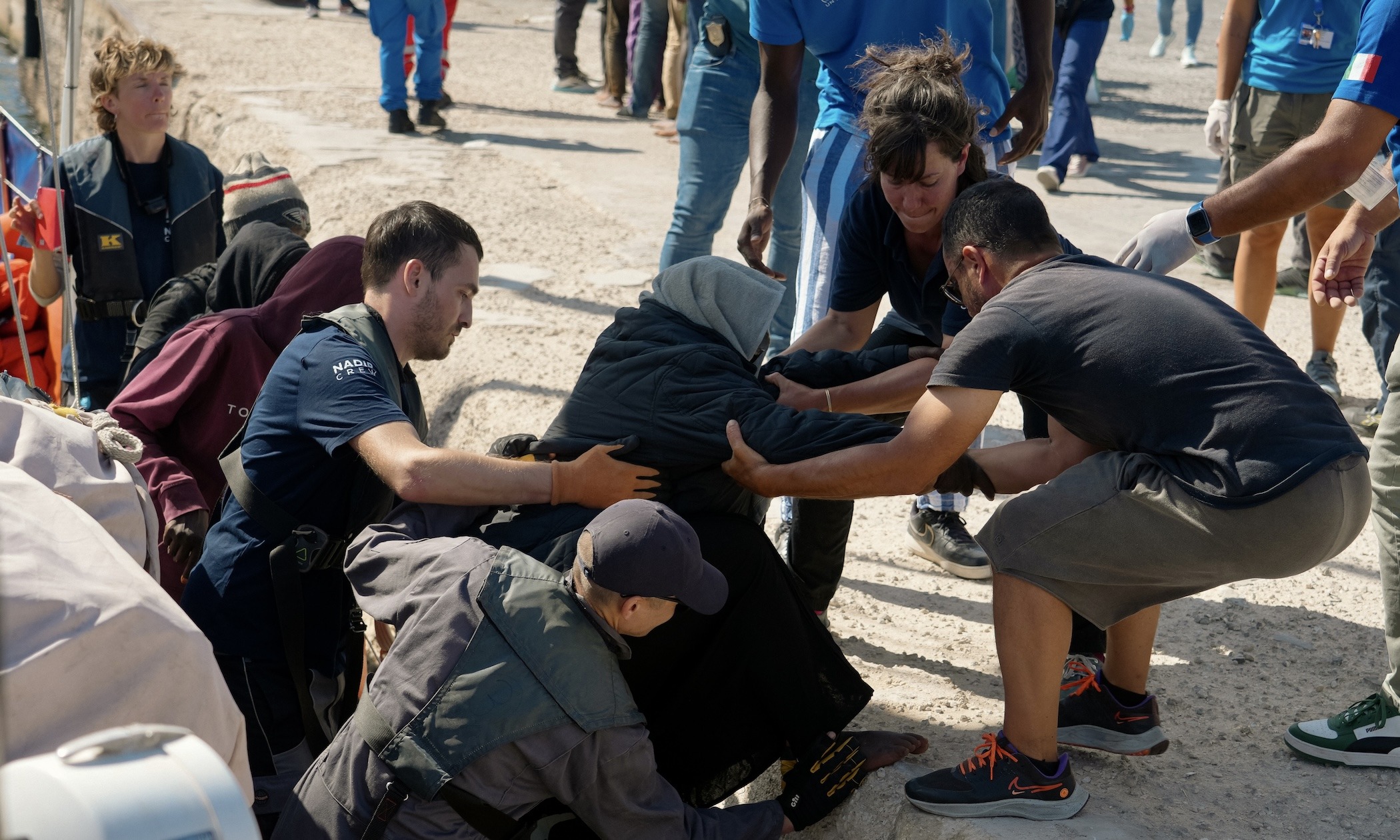
Wind, waves, and the endless search
That night had also left its mark on us. After a short rest, we departed Lampedusa the next morning. What followed is likewise part of the reality in the Mediterranean. As wind and waves picked up again, we received only few reports of boats in distress. On the morning of 4 August, after hours of searching, we finally came across a rubber boat that had already lost much of its air. Yet shortly before our arrival, the Italian Coast Guard had taken the roughly 50 people on board.
That same day, Alarm Phone reported another boat in distress that had departed from the Tunisian coast. Together with Seabird 2, we searched for hours once more – but this time without success. What happened to the 54 people remains unknown. The very fact that such situations occur at all is evidence of a system that deliberately shirks responsibility: the absence of state coordination in distress cases and the lack of safe escape routes make these situations not the exception, but the daily reality at Europe’s external borders.
26 people braving the high waves on a rubber boat
A full week had passed since our last operation when, on the morning of 6 August, a crew member spotted a rubber boat through binoculars. It was barely visible, hidden between the waves, and only appeared for brief moments on the crests. On board were 26 people, heading towards Lampedusa. They had departed from Sabratha, Libya, two days earlier. Without any rescue equipment, they were fighting against two-metre-high cross-waves.
We handed out life jackets, blankets, drinking water and crackers, and remained alongside them. Our tender stayed close to the rubber boat at all times, while we pressed the authorities to send a coast guard vessel to evacuate the people as quickly as possible. After six long hours, the Italian Coast Guard finally took them on board.
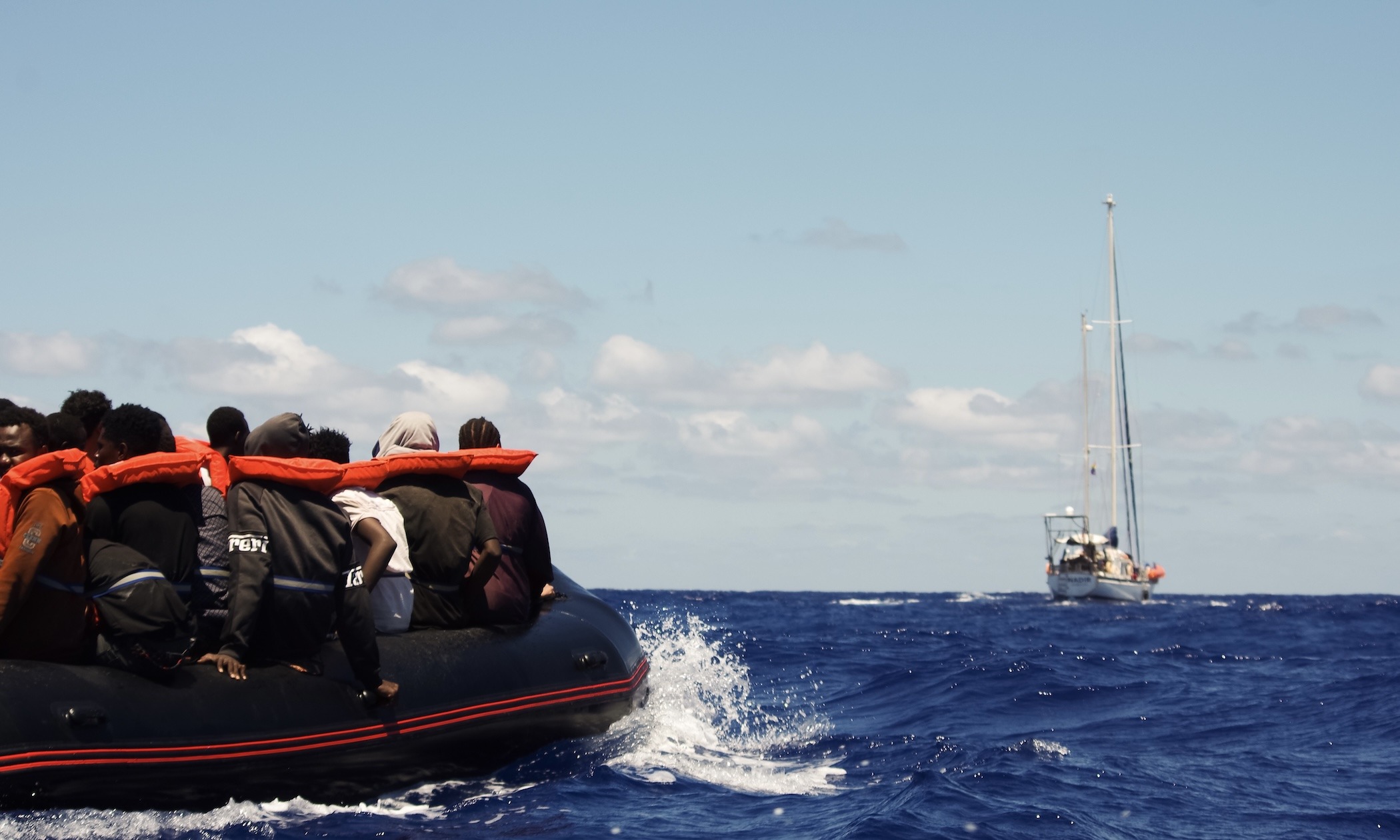
The political headwind increases – at the expense of human lives
This operation was meant to mark the end of our time in the area. Yet before we could set course for home, we were once again ordered back to Lampedusa. As part of the new wave of repression, we are now required to deliver a detailed report on every distress case in person on the island. Modern means of communication such as email are denied to us.
On the same day, welcome news reached us. Both the DAKINI and the AURORA were released early, as the legal grounds for their detention had proved insufficient. But even as we felt this relief, the Italian government responded by detaining the reconnaissance aircraft Seabird 1 for the first time.
This new wave of repression is nothing but a political signal and pure harassment. Giorgia Meloni is determined to prove that she has the ›problem‹ of migration under control – failing to see that the decision to flee lies in the hands of those affected and certainly does not depend on whether ships or aircraft are detained.
Thus, a multifaceted operation came to an end. Late in the evening of 7 August, the NADIR finally reached Malta again. After two and a half months and two detentions, we were relieved to return safely to our home port.
Image rights: Paula Gaess | RESQSHIP e.V., Isabell Köppl (2nd image)
